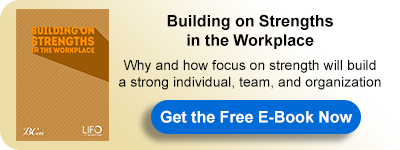How Successful Organizations Identify and Maximize Employee Strengths
As a leader, this will be the most difficult role of yours. We, as humans, tend to notice the drawbacks, the wrong deeds, and the weaknesses more than noticing the good deeds and strengths. From a leader’s perspective, you are the one in charge of what your subordinates do, and hold the final accountability for your team and its results. You need to deliberately assist your employees to regularly practice their skills and manifest their strengths. Knowing your team’s strengths enables you to make better decisions about assignments and conduct more reliable performance reviews. The deliberate practice is essential for the employee to develop his strengths and also for you, as a leader, to develop your leadership skills of utilizing your team’s strengths.
Benjamin Bloom, a professor of education at the University of Chicago, published a landmark book, Developing Talent in Young People, which examined the critical factors that contribute to talent. One thing emerges very clearly from Bloom’s work: All the superb performers he investigated had practiced intensively, had studied with devoted teachers, and had been supported enthusiastically by their families throughout their developing years.1
"Deliberate practice involves two kinds of learning: improving the skills you already have and extending the reach and range of your skills. The enormous concentration required to undertake these twin tasks limits the amount of time you can spend doing them," said Dr. K. Anders Ericsson, the Conradi Eminent Scholar of Psychology at Florida State University, in Tallahassee.1
Instead of recruiting a person based on their experience, intelligence and determination. Buckingham and Coffman in their book "Break the Rules" say: "BREAK THIS RULE! Great managers select for TALENT."
The right talent is fundamental – much more than experience, much more than brainpower, much more than will power. We need to nurture talent to succeed.
Buckingham and Coffman break talent into three categories:
- Striving talents – the “why” of a person. Why they do things, their drive, why they are who they are
- Thinking talents – the “how” of a person. How they think, how they rationalize decisions, their values
- Relating talents – the “who” of a person. Who they trust, who they confront, who they ignore
1https://hbr.org/2007/07/the-making-of-an-expert
For more about this topic, download our latest book "Building on Strengths in the Workplace" for FREE:
